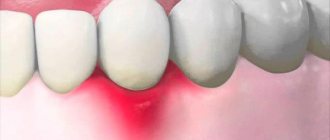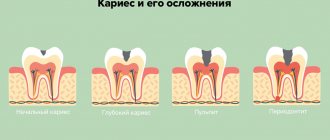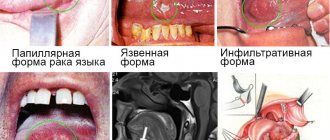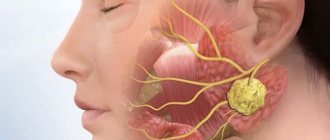The problem of food getting between teeth is one of the most common in dentistry. Most people, immediately after eating, need to thoroughly clean the interdental spaces with floss or a toothpick, since food debris getting between the teeth causes very unpleasant and even painful sensations.
Unfortunately, many take this situation for granted and continue to try to eliminate the discomfort without trying to identify and eliminate its cause. But it’s worth thinking about why pieces of food get stuck between the teeth and what the consequences might be; moreover, it’s necessary to take measures to solve the problem. This situation can be corrected quite easily; all you need to do is contact a qualified dentist.
What should you do if food gets stuck between your teeth regularly? The problem can be solved in two ways: by visiting the dentist to identify and eliminate the causes of this phenomenon, and by daily cleaning of the interdental space to prevent the proliferation of pathogenic bacteria.
Causes of food getting stuck between teeth
The main reason for food getting between the teeth is a violation of the density of their contact with each other (in dentistry this concept is referred to as a “contact point”), which can be caused by:
- low-quality fillings (prostheses). An incorrectly placed filling may not exactly follow the topography of the tooth and may have an overhanging edge. A sign of poor quality fillings can be either stuck food or breaks in the dental floss during its use;
- natural structure of the dentition. This may be curvature of the teeth, diastema (gaps between the lower or upper central teeth), trema (gaps between the lateral teeth);
- deformation of the dentition due to injury, tooth extraction, and various diseases of the oral cavity.
- Unprofessional prosthetics. There may be a gap between the crown and the tooth; the denture design does not correspond to the anatomical shape.
- There is no papilla between the tooth and gum. It fills the interdental space, and in the absence of such a papilla, the problem of food getting stuck appears.
- Crevices. May appear as a result of injuries or diastema. As a result, pieces of hard food constantly get stuck in the cracks, which have to be removed with thread or a toothpick.
- Loss of teeth. As a result, the integrity of the dentition is compromised, which provokes the occurrence of the problem in question;
- Caries. As a result of carious lesions, the enamel is destroyed and a cavity is formed. Residues of food accumulate here, which can only be removed purposefully: ordinary rinsing and salivation will not cope with this task.
Factors of tooth decay
An unpleasant odor coming from under the crown is the main sign of tooth decay. This can happen for various reasons, each of which requires its own specific treatment tactics.
The main factors are:
If you ignore the instructions, the fixation of the structure is very quickly broken, which leads to its falling out. In this case, the patient’s anatomical organ remains open and is exposed to the negative effects of bacteria.
Purpose of dental ceramics and its characteristics.
Come here to learn more about possible complications after dental prosthetics.
Consequences of regularly getting food stuck between teeth
Some people don’t even think about how to get stuck food out of their teeth. They are guided by the principle, it doesn’t hurt and it’s okay, making a big mistake. Meanwhile, such neglect can lead to dire consequences. For example:
- Gum diseases - food debris is an irritant that damages the mucous membranes, which provokes the development of dental diseases: gingivitis, periodontitis, etc.;
- Unpleasant odor - the food remaining between the teeth begins to decompose, which, in addition to the amber, creates a favorable environment for the life of pathogenic bacteria;
- Root injury – irritation of the gums can cause exposure of the neck of the tooth, which increases sensitivity and causes pain;
- Caries - stuck pieces of food is one of the main causes of carious lesions of the enamel; this disease can only be eliminated through dental intervention;
- Tissue destruction – if you do not clean the interdental space, the teeth begin to gradually deteriorate, which can lead to complete loss.
What does the smell from under the crown indicate and what to do
Many people ignore the appearance of bad breath.
However, the smell may be a symptom of the development of a dangerous process in the oral cavity. If this unpleasant phenomenon appears from under the crown, you should consult a doctor, because... this indicates tooth decay and can lead to dangerous complications.
The content of the article:
How to remove food if it's stuck between teeth
If food gets stuck between your teeth and your breath smells, you need to use hygiene products to care for your teeth.
The most common cleaning methods:
- The toothpick should be positioned at an angle of 30-40 degrees relative to the gum, pressed against the gingival papilla and the plane of the tooth. Remains of food are removed by moving the toothpick upward.
- Dental floss. The floss is pinched with your fingers and inserted into the interdental space. Cleaning with dental floss is carried out in a reciprocating motion.
It is important to understand here that both of these methods are quite traumatic, and any careless movement can damage the gums. Then how to remove food stuck between teeth? To do this, you can use an irrigator.
Irrigators are absolutely safe to use: pieces of stuck food are removed with a stream of water. This allows you to efficiently clean even hard-to-reach places without damaging the gums and interdental spaces. In addition, irrigators are ideal for the care of denture structures.
Elimination tactics
If an unpleasant odor appears from under the crown, seek the help of a doctor. The destruction process is irreversible. It will develop until the tooth is completely destroyed.
Self-medication in this case will not help and can only worsen the situation.
Before visiting a doctor, the following actions are recommended:
- Rinsing the mouth with herbal infusions - chamomile, calendula or oak bark. They have an anti-inflammatory effect and will help alleviate the condition a little;
- Careful oral hygiene. To remove food debris from under the crown, you can use special brushes or an irrigator.
Complete elimination of an unpleasant odor is possible only after getting rid of the main cause of its appearance. To do this, you need to remove the crown and carry out appropriate treatment.
Only specialists know how to fix the problem, and their actions are as follows:
- After removing the prosthesis, a complete sanitation is carried out - cleaning the surface of the problem unit from contamination and treating carious lesions.
- Installation of a new crown of the correct size. This ensures a tight fit of the structure to the tooth and eliminates the formation of gaps where food can get clogged.
- High-quality fixation of the prosthesis in compliance with all technologies. Only this ensures the reliability of the structure and eliminates the risk of loosening with all the negative consequences.
You should not skimp on the clinic and choose an unqualified specialist. If depressurization occurred due to the fault of a specialist, then replacement should be made free of charge.
The sooner the patient sees a doctor, the faster it is possible to restore functionality and aesthetics. Doctors urge patients not to be afraid of undergoing a second prosthetic procedure.
In such cases, the main task should be to preserve the health of your own tooth, and not the artificial structure.
Manufacturing technology of half-crowns and indications for their installation.
In this publication, we will find out why the crown on the implant is loose.
Damage to dentures due to gum disease
If food gets clogged under the denture, it is necessary to examine the oral cavity for inflammation or other dental diseases. They can soften the gums, which become loose and do not hold the structure well. The consequence is mobility of the crown or bridge, a gap appears and plaque accumulates after eating. Such complications lead to:
- gum recession, in which they become smaller and sag under the denture by several millimeters;
- gingivitis;
- stomatitis;
- periodontal disease;
- destruction of the intergingival papilla due to the listed diseases or incorrect implantation;
- accumulation of tartar, which prevents the clasp bridge from being firmly secured.
Most often, problems arise after the installation of crowns. If a specialist missed the initial stage of caries or did not polish the stump well, it continues to rot. Inflammatory fluid accumulates in the roots, causing swelling and swelling. The mucous membrane seems to squeeze out the prosthesis and make it unstable.
If food gets under your dentures, you should contact your dentist. The reason often lies in the discrepancy between the size of the acrylic jaw and the human gums. Therefore, it is important not to skip fittings with the orthodontist. The deficiency can be eliminated by rebalancing the structure. Sometimes the patient simply cannot secure the locks or latches correctly, so a simpler and more comfortable prosthetic option is selected for him.
Common types of prostheses
A large number of techniques and methods are used to restore teeth in dentistry. With their help, an experienced prosthetist can insert one destroyed unit and form a beautiful bridge with the loss of several teeth. All dentures are divided into removable and non-removable. The first ones are attached with miniature locks and fasteners and can be easily removed for daily cleaning. The latter are fixed securely with a special glue or cement, reminiscent of a filling composition.
You can restore the ability to chew by installing one of the following dentures:
- crowns, which are tightly fixed to the tooth stump;
- clasp or soft acrylic bridge;
- false jaws with a special fastening system with locks or suction cups;
- temporary plastic overlays that must be worn before implantation and cover the implanted pins.
The design should fit so tightly to the gums as to prevent the ingress of plaque and pieces of food.
When wearing, it is necessary to avoid chafing and dents, pain and discomfort. If food becomes trapped under the denture, rotting and decomposition occurs. This provokes a specific smell when talking and the appearance of inflammation of the mucous membrane, provokes the development of chronic gingivitis and periodontal disease. The diseases also affect healthy teeth and cause damage to the roots, pulpitis and dangerous abscesses in the periodontium. Another common complication occurs if food gets caught under a fixed denture. Once the crown is cemented in place, it cannot be removed for proper cleaning. Gradually, plaque after eating is fixed on the enamel of the remaining stump, turns into stone, eats away at it and leads to secondary caries.
Preventive crown care
In order not to provoke the accumulation of masses under the crown and cause tooth decay, it is necessary to maintain oral hygiene. A crown is an artificial structure and will require more care.
- Brush your teeth twice a day, including using special brushes for caring for dentures.
- Rinse your mouth after every meal.
- Floss regularly.
- Use toothpicks only when necessary. This is not at all a means of maintaining dental hygiene! Picking with a wooden stick, expanding cavities in teeth and crowns, is contraindicated.
If you have already had the sad experience of tooth decay under a denture, pay more attention to the alarm bells: pain under the crown, bad smell, taste of blood in your mouth. Make an appointment with a dentist; timely treatment will be shorter and cheaper than treatment for a neglected tooth.
If you realize that the tooth has begun to rot, remember that the process is irreversible. It will not be possible to cure inflammation with home methods. You should not wait until there is severe pain or the crown falls out in your sleep, with the risk of suffocation. A diagnosis from a doctor will help you cope with the problem.
Make an appointment at Dr. Lopaeva's clinic
Make an appointment
Or call +7(985)532-21-01
Why a tooth can rot under a crown, what needs to be done and where to go
NuCalm – dental treatment without fear and stress, relaxation without medications
A tooth hurts under a crown, where to go in Moscow
Acute toothache where to go in Moscow
The result of replacing crowns is that food does not get stuck between the teeth
Tight contacts between teeth ensure that food does not get stuck and gums remain healthy.
The cost of ceramic crowns is 55,000 rubles per unit.
Of course, it is possible to make dental crowns cheaper (cheaper material, lack of computer modeling, etc.), but this will invariably affect the quality. The use of computer technology makes it possible to more carefully work out the shape of the crowns, provides additional convenience when taking impressions - all this is reflected in the price, so good dental crowns cannot be cheap. In addition, Dial-Dent uses the highest quality and most modern materials both for the crowns themselves and for their fixation, which increases the service life of dental restorations.










